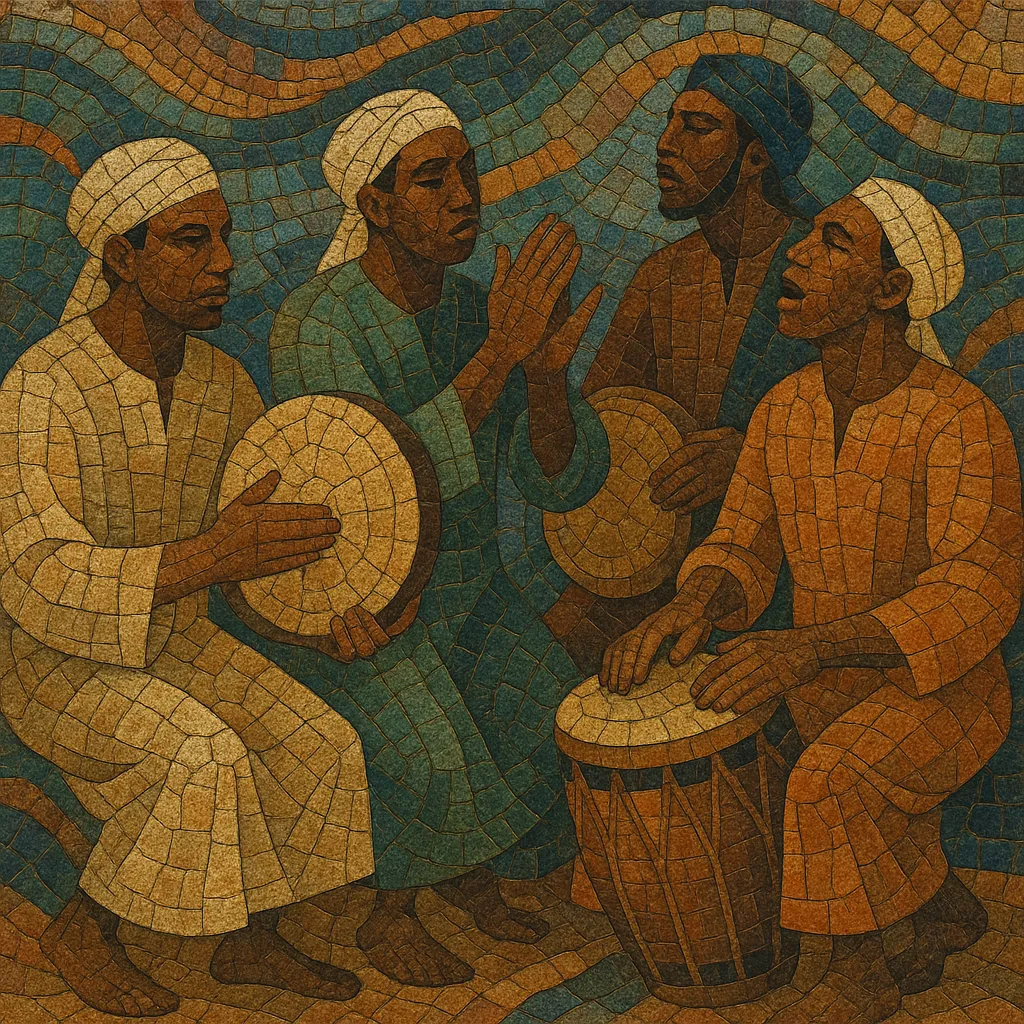Nuban is a Gulf Arab coastal folk performance with strong East African roots, practiced most prominently in Oman and the United Arab Emirates. It combines polyrhythmic drumming, call-and-response singing, and tightly choreographed line or circle dances.
The music is typically driven by frame drums and barrel drums, handclaps, and unison shouts, creating a powerful, trance-leaning groove in compound meters (often 6/8). Vocals alternate between a lead singer and a chorus, using Arabic—sometimes colored by Swahili loanwords—reflecting centuries of Afro–Arab exchange across the Indian Ocean.
In social life, Nuban appears at weddings, communal celebrations, and heritage festivals. Its energetic rhythms, communal chorus, and kinetic choreography make it a participatory art, emphasizing cohesion, pride, and improvised showmanship.
Nuban emerged along the Gulf of Oman and southern Arabian coast in the 1800s, when maritime trade and migration connected Oman and the Trucial Coast (today’s UAE) with East Africa, especially Zanzibar and the Swahili Coast. African-descended communities brought dance, drum patterns, and antiphonal singing that blended with local Arabic poetic and ceremonial practices.
By the late 19th and early 20th centuries, Nuban had taken on a recognizable Gulf identity: compound meters (often 6/8), layered hand percussion, and call-and-response refrains supporting choreographed group movement. Performances were community-based rather than professionalized, and repertoire was transmitted orally through local ensembles and family lines.
Nuban functioned as a social art for weddings, circumcision ceremonies, and neighborhood festivities, expressing communal solidarity and honoring the heritage of Afro–Arab seafaring communities. The dance component—lines or semicircles facing the drummers—became as defining as the rhythm itself, with leaders cueing breaks, tempo shifts, and dynamic swells.
From the late 20th century onward, heritage organizations and folk arts societies in Oman and the UAE helped preserve Nuban through staged presentations and festivals. While the core features (drums, clapping, antiphony) remain intact, some troupes have adapted arrangements for larger stages and mixed audiences, and its rhythmic vocabulary has subtly informed contemporary Khaleeji pop and festival presentations of regional folklore.


